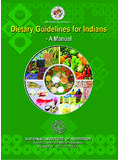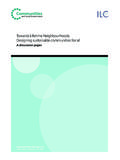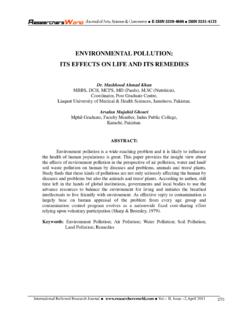Transcription of Creating a Garden for Birds
1 1 5 9 S A P S U C K E R W O O D S R O A D I T H A C A , N E W Y O R K 1 4 8 5 0 6 0 7 2 5 4 - B I R D Interpreting and conserving the earth's biological diversity through research, education and citizen science focused on aGarden for BirdsFew things are as interesting and beau-tiful as songbirds. They brighten up the darkest days of winter, adding music and color to our lives. What can we do to repay them? For starters we can make our yards more bird - friendly. Never before has suit-able habitat for Birds been in such short supply. Urban areas are expanding constantly, alter-ing or destroying natural areas. By Creating bird gardens, we provide oases for Birds in the heart of our cities. And not only will the Birds benefit, but if you make your yard more attractive to Birds , you ll have the pleasure of seeing an increasing number and variety of Birds there.
2 Plastic bottle or jug of water with a hole in the bottom over their birdbath. The motion and sound of the dripping water is irresistible to many Birds . Does your yard have an area of dense thickets that Birds could use for nesting, secluded perch-ing, or escape cover? If not, then plant some shrubs or make a hedge. Consider growing some vines up the side of your house or along your fence. Try to create lush, wild growth in a few places to simulate a natural environment. You might at-tract cavity-nesting Birds by putting up a nest box (see BirdNotes No. 3, Selecting a Nest Box). You should be able to find some excellent plants for your Garden in a nursery either local or mail order. Do check to make sure that the plants you select are hardy and native to your AheadWhen you re designing your yard, consider how large each plant will be when it matures.
3 Remember that a lovely little tree that you plant to-day may become a giant behemoth that hogs your entire yard in a few years. Before you start digging up plants and rearranging your yard, you ll want to try out your Garden design on paper. Draw a map of your prop-erty, showing the location of your house and all the trees and other major plants. Then place a sheet of thin tracing paper over the map and The first step in designing a bird Garden is to evaluate your yard from a bird s perspective. Does it provide the basic necessities food, water, shel-ter that Birds need to survive? If not, which are lacking? If there s a short-age of food, you can hang up bird feeders, but also consider planting some fruit-bearing trees or shrubs. Plants that hold their fruits through the winter provide a vital food source for nonmigratory Birds .
4 Add variety to the kinds of food you offer, and you ll attract a wider variety of bird species. A good water source will draw Birds like a magnet. Even just a common birdbath purchased at a Garden supply shop will do. Some people hang a 1 5 9 S A P S U C K E R W O O D S R O A D I T H A C A , N E W Y O R K 1 4 8 5 0 6 0 7 2 5 4 - B I R D Number 13 Catalog No. 223draw your redesigned Garden , indi-cating where each new plant will go. Avoid straight lines or rows in your plantings. Create a meandering line where two kinds of habitat, such as shrubs and lawn, meet. These edge areas provide the widest variety of perching places, nest sites, and food types. Develop secluded areas of shrubs, conifers, and mixed plant-ings. Take note of the areas in your yard that receive sun or shade, and choose only plants that are appro-priate for each lighting situation.
5 Leave dead limbs and even entire dead trees where they are (unless they re dangerous to people or property). The insects tunneling un-der the bark are an important food source for Birds such as chickadees, woodpeckers, and , old hollow trees are becoming increasingly scarce, and are often taken by nonnative species such as European Starlings and House Sparrows. Native cav-ity-nesters such as bluebirds and woodpeckers are having an increas-ingly difficult time finding nest sites. A dead tree can look attractive in a Garden , particularly if it has ivy growing up its trunk. Use dead branches that fall from your trees to start a brush pile. It will afford protection to the Birds from harsh weather and predators. To start your brush pile, lay down some thick branches about two feet deep, then add a few feet of thin-ner branches on top.
6 Over that, add some thin conifer a little time and effort, you can easily turn your yard into a wel-come haven for local and migrant a little effort, you can easily turn your yard into a welcome haven for More InformationBuilding a Backyard bird Habitat, by Scott Shalaway. This book offers practi-cal and easy-to-follow information on how to create a backyard habitat that will attract a variety of Birds throughout the bird Garden , by Steve Kress. This useful guide is a must for anyone in-terested in landscaping their yard for Birds . Includes regional lists of special bird join the Cornell Lab of Ornithology, send a check for $35 to Member-ship, Box 11, Ithaca, NY 14851 or call (800) 843-2473, (607) 254-2425 outside the Or visit our web site at < >. Member-ship starts at $ a year and includes a subscription to Living bird maga-zine, Birdscope newsletter and much more.
7 2003 Cornell Laboratory of Ornithology. All rights reserved. Illustration of Eastern Towhee by Orville PlantsCheck with your nursery to make sure that the plant species you select are na-tive to your TREESM ulberries (Morus species). The berries produced by these trees in July and August are a favorite food of more than 40 bird species. These wide-spreading, medium-sized trees grow 30 to 60 feet (Cornus florida and other species). An excellent choice for Birds and people, this well-known ornamental tree is covered with white, pink, or red flowers in spring and red fruits ( Birds love them) from August to November. Grows up to 40 feet Apples (Malus species). Many bird species eat the flower buds, flowers, fruit, and seeds of these trees, which also provide good cover and nest sites. Usually grow to about 20 feet (Amelanchier spe-cies).
8 These are medium-sized trees, 25 to 60 feet tall, that grow masses of white or pinkish flowers in spring. Fruits appear in the TREESRed Cedar (Juniperus virginiana). An attractive cone-shaped tree, of-fering cover, nest sites, and winter fruit for Birds . Usually grows 50 to 90 feet (Picea species). The cones of these trees produce seeds that Birds eat in fall and winter. Spruces also provide cover and nest sites. They may grow up to 150 feet AND VINESN orthern Bayberry (Myrica pensyl-vanica). This semi-evergreen shrub grows berries which stay on the plant year-round and are a preferred food of Tree Swallows, catbirds, bluebirds, and many other Sumac (Rhus typhina). This shrub has brilliant red fall foli-age and clusters of hairy red fruit that persist throughout winter and are eaten by many bird (Viburnum species).
9 A large genus of easy-to-grow shrubs with white flowers in spring, fol-lowed by red, yellow, blue, or black berries. Birds eat the berries and find cover in the Grapes (Vitis species). These climbing vines provide superb fruit, eaten by more than 50 bird species. The vines also provide excellent cover and nest Creeper (Parthenocissus quinquefolia). A tree-climbing vine that produces small blue berries from August to February.







